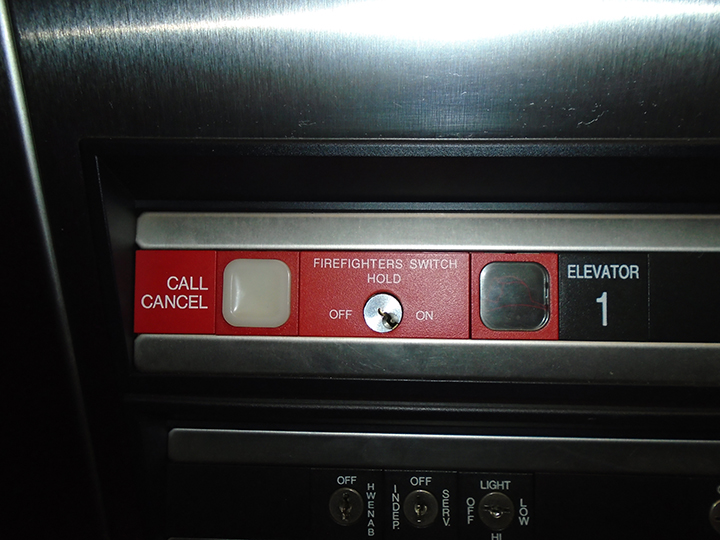Elevator recall for firefighter operations is a required function in all automatic elevators per 524 CMR, the Massachusetts State Elevator Code, which is an amended version of ASME A17.1 – 2013 Edition. Elevator recall is comprised of two distinct phases, each with their own controls, actions, and requirements.
Phase I Elevator Recall
Phase I elevator recall is an automatic sequence initiated by the fire alarm system to relocate an elevator cab to the designated recall floor. Activation of an automatic fire alarm initiating device located directly adjacent to an elevator door, an elevator hoistway, or within rooms or spaces containing elevator machinery and/or controls will result in associated automatic elevators initiating Phase I recall.
- Phase I recall will bring all elevators to the primary floor, with or without passengers.
- In the event that smoke is detected immediately adjacent to the elevator doors on the primary floor, Phase I recall will take the elevator to the alternative floor.
- The Fireman’s hat will illuminate steady when the elevator car is placed in Phase I recall. The Fireman’s hat will extinguish when the associated elevator car is put back into normal operation. The fireman’s hat will illuminate intermittently when the fire is in the hoistway or in the equipment/control room.
- Activation of the Fire Service Switch in the lobby will return the car to the primary floor.
Phase II Elevator Recall
Phase II elevator recall describes the fire department’s manual operation of elevators.
Fire Alarm Requirements
Every elevator (or group of elevators in the same hoistway) will need the following fire alarm devices:
- Smoke/heat detector in each elevator lobby on each floor;
- Smoke/heat detector in the elevator equipment room;
- Heat detector in hoistway, if permitted, if hoistway is sprinklered (Note: Sprinklers are not permitted in hoistways in MA)
- Relay for Primary Recall;
- Relay for Secondary Recall;
- Relay to illuminate Fireman’s Hat;
- Relay for Shunt Trip, if hoistway is sprinklered (Note: Shunt trip is not permitted in hoistways in MA)
- Monitor or zone for Shunt Trip Power Fail, if hoistway is sprinklered
*Please note that hoistway ventilation is no longer required under the newest edition of 524 CMR. Please find our other insight on elevators here for more information on this topic.


